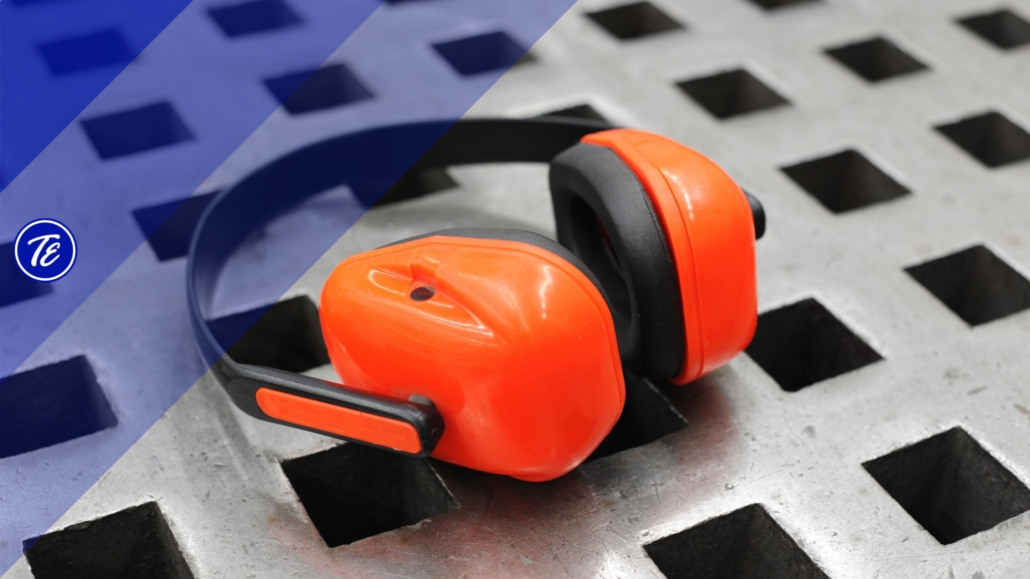The assessment of noise risk
Noise risk: methodology for its understanding
Noise is a constant in our daily and working lives: we are constantly surrounded by sound. Some noises can be harmful to our health. Prolonged exposure to high noise levels can cause bilateral sensorineural hearing loss.

The sound is produced by regular and periodic acoustic waves with equal frequency, while the noise is irregular and not
periodicals that cause an unpleasant and annoying sensation.
The assessment of noise risk
Legislative Decree 81/08 art. 189 defines the exposure limit values and art. 190 obliges the employer to assess the noise exposure of workers by considering a number of parameters such as the level, type and duration of exposure, limit values, the effects that noise can cause, direct and indirect effects, existing PPE for hearing protection.
Exposure and action limit values for daily noise exposure and peak sound pressure (art. 189 Legislstive Decree 81/08):
a) exposure limit values LEX = 87 dB(A) and ppeak = 200 Pa (140 dB(C) respectively referred to 20 μPa);
b) higher action values: LEX = 85 dB(A) and ppeak = 140 Pa (137 dB(C) respectively referred to 20 μPa);
c) lower action values: respectively LEX = 80 dB(A) and ppeak = 112 Pa (135 dB(C) referred to 20 μPa).
There are two types of noise: continuous and impulsive. Continuous noise is a constant sound, like the hum of a car. Impulsive noise is a sudden, short sound, like an explosion or a shot. Both types of noise can cause hearing damage. However, impulsive noise can cause more serious damage due to its sudden nature.
More specifically, the noise risk assessment shall consider:
- emission,
- spread,
- reception.
Measuring
If it is considered during the assessment that the lower action values can be exceeded, the employer must measure the noise levels to which workers are exposed. For measurements it is necessary to use methods and instrumentation appropriate to the characteristics of the noise to be measured, the duration of exposure and environmental factors, in compliance with the specifications of the technical standards. Sampling may also be used, provided it is representative of the worker’s exposure.
You can also consult noise databases, collections of information about the noise level present in certain places or situations. These databases can be made up of a variety of sources, including measurements made by noise measuring instruments, estimates based on mathematical models and reports from citizens and institutions.
The noise assessment process consists of three phases: source identification, noise level measurement and risk assessment. The first phase involves identifying sources of noise at the workplace. The second phase involves measuring noise levels with a sound level meter. The third phase involves assessing the risk of hearing damage based on measured noise levels.
The risk assessment shall take into account the duration of exposure, the individual susceptibility to hearing loss caused by noise and the use of hearing protectors.
Quantification of exposure to noise
To quantify workers’ exposure to noise we use:
- the equivalent level, measured in dB, of a constant imaginary noise which, if replaced by the noise actually present for the same period of time T, would produce the same total amount of sound energy;
- the daily noise exposure level means the average value of the noise exposure levels, calculated in a time-weighted manner, during a normal 8-hour working day;
- peak acoustic pressure (ppeak).
possible scenarios
| Not exceeding the value below: LEX8h <dB(A) – 135 dB(C) | Obligations of the employer: • risk assessment |
| Exceeding the lower action value: LEX8h >dB(A) – 135 dB(C) | Obligations of the employer: • measurement of exposure levels • information and training • health surveillance • use of PPE |
| Exceeding of the upper action value: LEX8h => 85 dB(A) – 137 dB(C) | Obligations of the employer: • health surveillance • programme of measures to reduce noise exposure • use of PPE • appropriate signs |
| Exceeding the exposure limit value: LEX8h > 87 dB(A) – 140 dB(C) | Obligations of the employer: • immediate reduction of exposure • identification of causes • changes in preventive and protective measures |
As can be seen from the table, there are several strategies that can be used to reduce noise exposure, including the use of suitable PPE, noise barriers and roadworthiness tests. PPE, such as earplugs and headphones, can be used to reduce noise exposure. Noise barriers, such as curtains, walls and fences, can be used to block or absorb noise. Roadworthiness tests, such as soundproofing equipment and machinery, can be used to reduce noise at source.
Information and training of workers is essential for effective noise risk management. Workers must be instructed on the risks associated with exposure to noise and trained on the correct use of PPE. The employer must provide regular training on the use of roadworthiness tests and noise reduction measures.
Health surveillance
The health surveillance requirement for the prevention of the auditory effects of noise is activated if the upper LEX action level of 85 dB(A) and/or LCpeak >137dB(C) is exceeded.
If the LEX level of 80 dB(A) is exceeded, health surveillance may be activated at the worker’s request or if the competent doctor considers it necessary to do so.
Conclusions
Exposure to noise can also cause deaf effects on our health. Prolonged exposure to noise can cause stress, sleep disturbance, and hypertension. Noise-induced stress can cause increased heart rate and blood pressure, resulting in cardiovascular disease.
